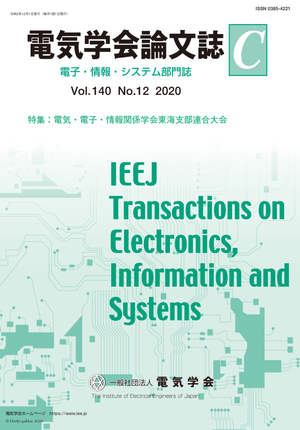モダリティを統合した認識モデルに基づく深層マルチタスク学習による感情の数理的表現
モダリティを統合した認識モデルに基づく深層マルチタスク学習による感情の数理的表現
カテゴリ: 論文誌(論文単位)
グループ名: 【C】電子・情報・システム部門
発行日: 2020/12/01
タイトル(英語): Mathematical Representation of Emotion Using Multimodal Recognition Model with Deep Multitask Learning
著者名: 原田 誠一(名古屋工業大学 大学院工学研究科 工学専攻 情報工学系プログラム),佐久間 拓人(名古屋工業大学 大学院工学研究科 工学専攻 情報工学系プログラム),加藤 昇平(名古屋工業大学 大学院工学研究科 工学専攻 情報工学系プログラム/名古屋工業大学 情報科学フロンティア研究院)
著者名(英語): Seiichi Harata (Computer Science Program,Department of Engineering, Graduate School of Engineering, Nagoya Institute of Technology), Takuto Sakuma (Computer Science Program,Department of Engineering, Graduate School of Engineering, Nagoya Institute of Technology), Shohei Kato (Computer Science Program,Department of Engineering, Graduate School of Engineering, Nagoya Institute of Technology/Frontier Research Institute for Information Science, Nagoya Institute of Technology)
キーワード: 感情コンピューティング,ディープニューラルネットワーク,マルチモーダル,マルチタスク学習,距離学習,感情空間 affective computing,deep neural networks,multimodal,multitask learning,metric learning,emotional space
要約(英語): To emulate human emotions in robots, the mathematical representation of emotion is important for each component of affective computing, such as emotion recognition, generation, and expression. In a method that learns DNN from unimodality and represents emotions by vectors of continuous values (Emotional Space), the acquired Emotional Space is likely to depend on the modality, and considering the number of dimensions of Emotional Space is necessary. In this study, we aim at the acquisition of modality independent Emotional Space. We propose a method of acquiring Emotional Space by integrating multimodalities on a DNN and combining the emotion recognition task and unification task of Emotional Space of each modality. Through the experiments with audio-visual data, we confirmed in various dimensions of Emotional Space that there are differences in Emotional Space acquired from unimodality, and the proposed method can acquire a modality independent Emotional Space. We also investigated the compatibility of the recognition and the unification score by changing the number of dimensions of Emotional Space. Finally, we indicate the proposed method can acquire sufficient Emotional Space with a small number of dimensions, such as five or six dimensions, under this paper's experimental conditions.
本誌: 電気学会論文誌C(電子・情報・システム部門誌) Vol.140 No.12 (2020) 特集:電気・電子・情報関係学会東海支部連合大会
本誌掲載ページ: 1343-1351 p
原稿種別: 論文/日本語
電子版へのリンク: https://www.jstage.jst.go.jp/article/ieejeiss/140/12/140_1343/_article/-char/ja/
受取状況を読み込めませんでした


